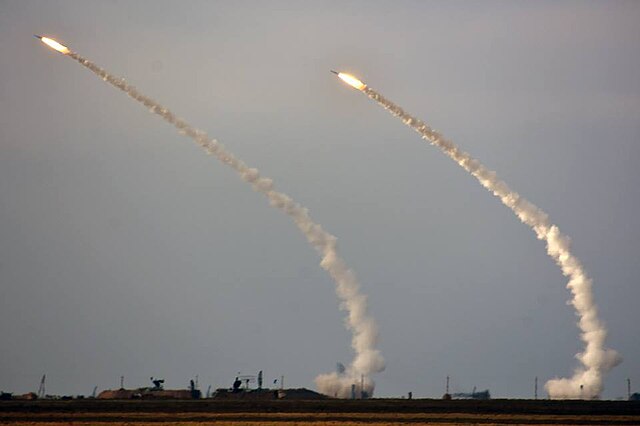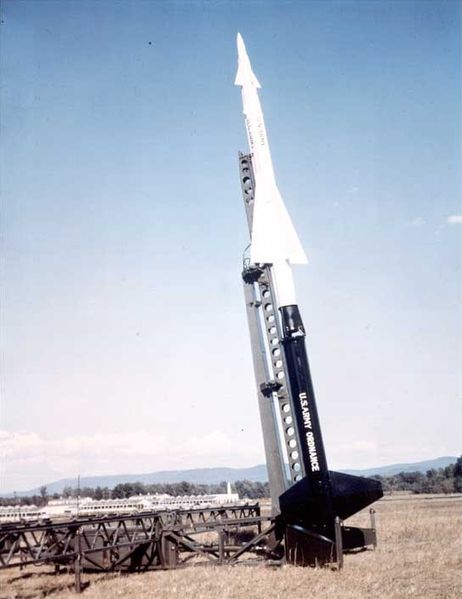The MIM-104 Patriot is a surface-to-air missile (SAM) system, the primary such system used by the United States Army and several allied states. It is manufactured by the U.S. defense contractor Raytheon and derives its name from the radar component of the weapon system. The AN/MPQ-53 at the heart of the system is known as the "Phased Array Tracking Radar to Intercept on Target," which is a backronym for "Patriot". In 1984, the Patriot system began to replace the Nike Hercules system as the U.S. Army's primary high to medium air defense (HIMAD) system and the MIM-23 Hawk system as the U.S. Army's medium tactical air defense system. In addition to these roles, Patriot has been given a function in the U.S. Army's anti-ballistic missile (ABM) system. As of 2016, the system is expected to stay fielded until at least 2040.
A Patriot system (equipped with an AN/MPQ-53 Radar Set) of the German Air Force in August 2013
Four Patriot PAC-2 or sixteen Patriot PAC-3 missiles can be fired from the highly mobile TEL
Soldiers from the 31st Air Defense Artillery Brigade conducting reload from a Guided Missile Transporter (GMT)
An operator in the Information Coordination Central (ICC) monitors the actions of the battery via his display.
A surface-to-air missile (SAM), also known as a ground-to-air missile (GTAM) or surface-to-air guided weapon (SAGW), is a missile designed to be launched from the ground or the sea to destroy aircraft or other missiles. It is one type of anti-aircraft system; in modern armed forces, missiles have replaced most other forms of dedicated anti-aircraft weapons, with anti-aircraft guns pushed into specialized roles.
A pair of S-300 missiles being launched
A Wasserfall missile lifts off during a test flight.
Nike Ajax was the first operational SAM system.
SA-2 Guideline surface-to-air missiles, one of the most widely deployed SAM systems in the world








